Wondermondo 🢖 Lists and articles 🢖 10 most amazing ancient rock-cut temples in India
Publication
10 most amazing ancient rock-cut temples in India
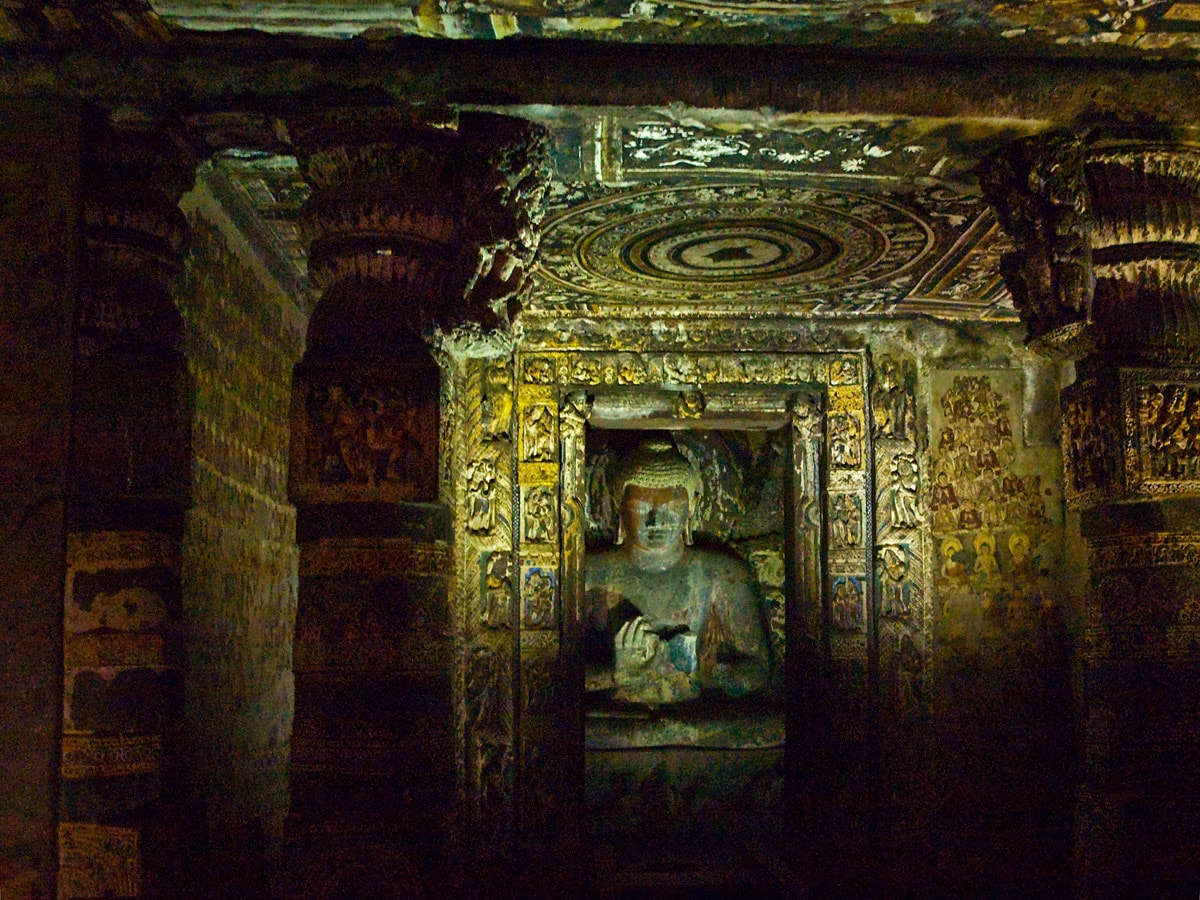
 In short
In short
The historical rock cut architecture of India is of unprecedented richness and variety. Several of rock-cut temples in India belong to the most amazing achievements of ancient cultures worldwide.
Below are listed 10 most amazing historical rock-cut temples in India. Each of these landmarks represents an unbelievable achievement of ancient artists and artisans.
Map of the sites
If you see this after your page is loaded completely, leafletJS files are missing.
 In detail
In detail
India – land of rock-cut architecture
The geology of Deccan Plateau and some more regions of India provides enough cliff faces and domes perfectly suitable to create rock-cut architecture.
Since the beginning of historical times (approximately the 3rd century BC) India has experienced several periods of flourishing and diversity of culture and one of the best-preserved forms of this rich culture is – rock-cut architecture, which is found in most parts of India.
Such rock-cut structures, especially cave temples were considered to be the best possibility to go away from the reality of the material world and meditate close to the heart of the mountain.
There are known more than 1,500 rock-cut temples in India, as well as other structures that were created 2,300 – 800 years ago. Many contain artworks of global importance, and most of these cave temples are adorned with unbelievable, intricate stone carvings and sometimes – paintings. These structures themselves represent amazing achievements of structural engineering, precision, and unbelievable skills of craftsmanship.
About this list
Wondermondo presents a list of 10 most amazing ancient rock-cut temples in India… and at the same time is not confident about this list.
But may be here had to be Gavi Gangadhareshwara Temple (Karnataka) – a rock cut temple which was aligned to allow sunrays to shine on shrine exactly at the time of important religious festivity?
Or may be here had to be Jogimara and Sita Bengra Caves (Chhattisgarh) – a part of 2,300 years old theater, where one cave is covered with paintings and contains the oldest known love message in the world?
Or may be the amazing Undavalli Caves or Panhale Kaji or Pitalkhora Caves?
Well, such lists always are subjective. Wondermondo dealt with it and now, please – see the result here.
 List of 10 most amazing ancient rock-cut temples in India
List of 10 most amazing ancient rock-cut temples in India
01
Ellora Caves
 74.7%
74.7%
Maharashtra
Ellora Caves (Maharashtra) belong to the highest achievements of mankind both regarding the engineering skills and arts. Words can not describe the incredible richness of artistic and philosophical messages emanated by thousands of sculptures, drawings and inscriptions in Ellora.
This group of 34 monasteries and temples belongs to the last great rock-cut temples in India. Temples were built for three religions – 12 Buddhist temples and monasteries (630 – 700 AD), 17 Hinduist shrines (550 – 780 AD) and 5 Jain temples (800 – 1000 AD).
Most amazing creation here is Kailasanatha (Kailash Temple). This is a large (84.1 m long and 29,3 m high – two times larger than Parthenon in Athens), free-standing structure with extremely complex structural planning. It was carved 100 years and in this time with extreme precision were removed 200,000 tonnes of rock. Temple was shaped to resemble the sacred Mount Kailash and originally was plastered and painted in bright colors.
Some more cave temples here represent amazing achievements of structural engineering and contain important art values of global importance – Cave 10 ("Carpenters Cave"), Cave 11 (Do Tal) with three stories, Cave 15 (Dasavatar), Cave 21 (Rameshvara), the amazing Cave 30 (Chhota Kailash – a smaller version of Kailasanatha) and the extremely ornate Cave 32 (Indra Sabha).
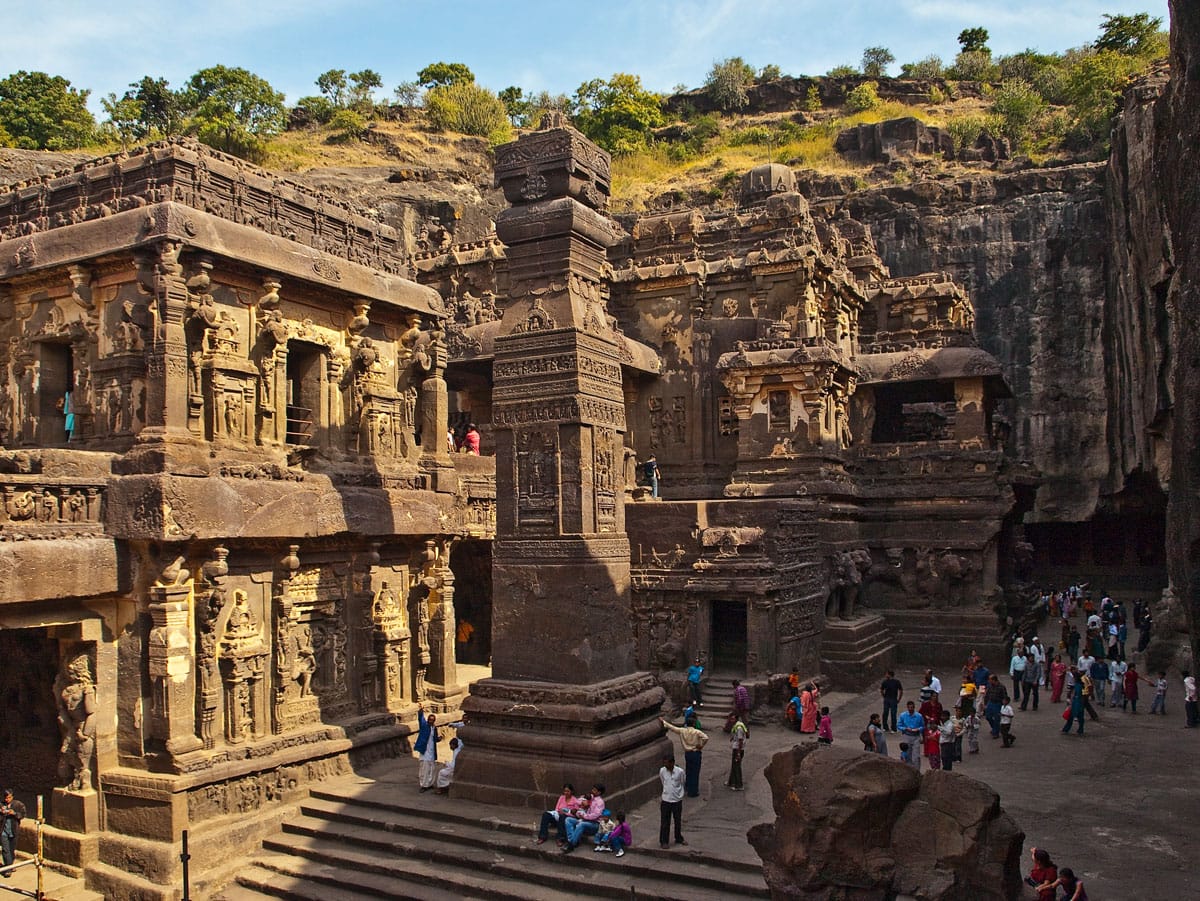
02
Ajanta
 74.0%
74.0%
Maharashtra
There is one serious competitor to Ellora Caves – Ajanta Caves. This is a group of 29 rock-cut Buddhist temples and monasteries made in the 2nd century BC – 480 AD.
These caves contain some of the richest collections of ancient art in the region and represent a phenomenal achievement of humanity. When these caves were discovered in 1819 (after being forgotten for… 1,300 years!), they left much influence on European and American art – numerous artists became essentially obsessed with the copies of Ajanta paintings and sculptures.
These caves represent an amazing achievement of engineering. Some of the cave hall spaces without supports are almost as large as a basketball field – and have been standing for more than 1,500 years without much change.
Caves contain the oldest known Indian paintings of historical time made in the 2nd century BC, as well as some of the best cave paintings in India in Cave 17.
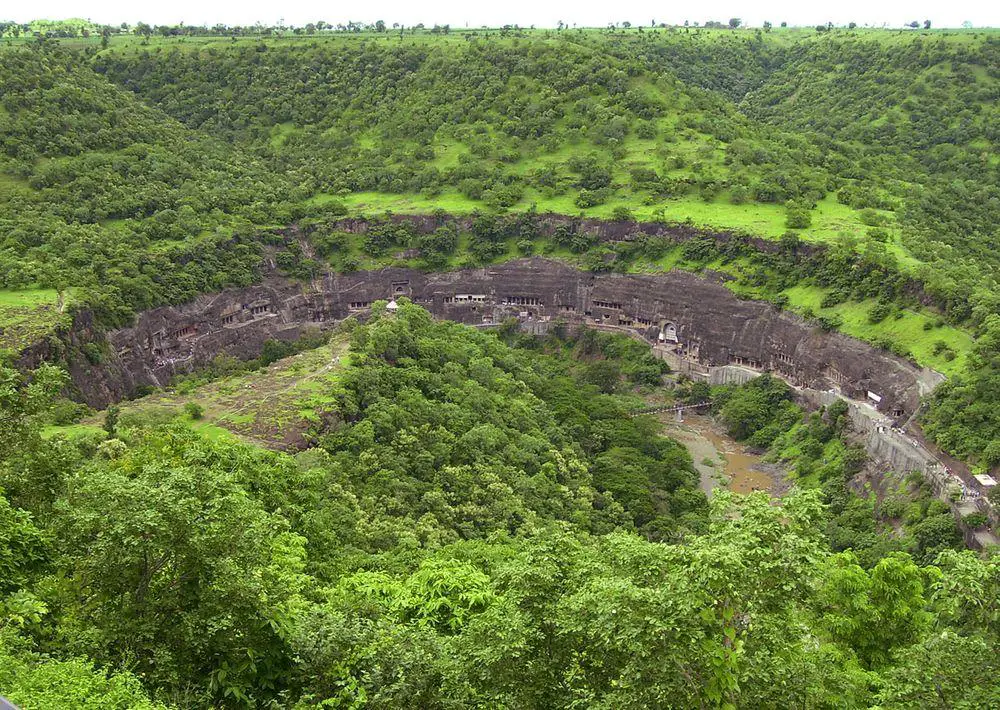
03
Elephanta Caves
 64.3%
64.3%
Maharashtra
There is not much known about the amazing, giant chambers on the small Elephanta Island near Mumbai. But at the same time, the timeless, outstanding art values in these cave temples tell a lot about the skills and genius of ancient artisans, who created this wonder somewhere in the 5th – 8th century AD.
There are five rock-cut Hindu shrines and two Buddhist temples on the island. The most impressive and interesting by far is the Great Cave. This 39 m deep rock cut structure is adorned with numerous large sculptures and bas reliefs of very high artistic value, including the famous Trimurti – 6.1 m high sculpture with three faces of Shiva.
Caves once were covered with plaster and painted in bright colors. Nowadays only traces of this painted plaster remain.
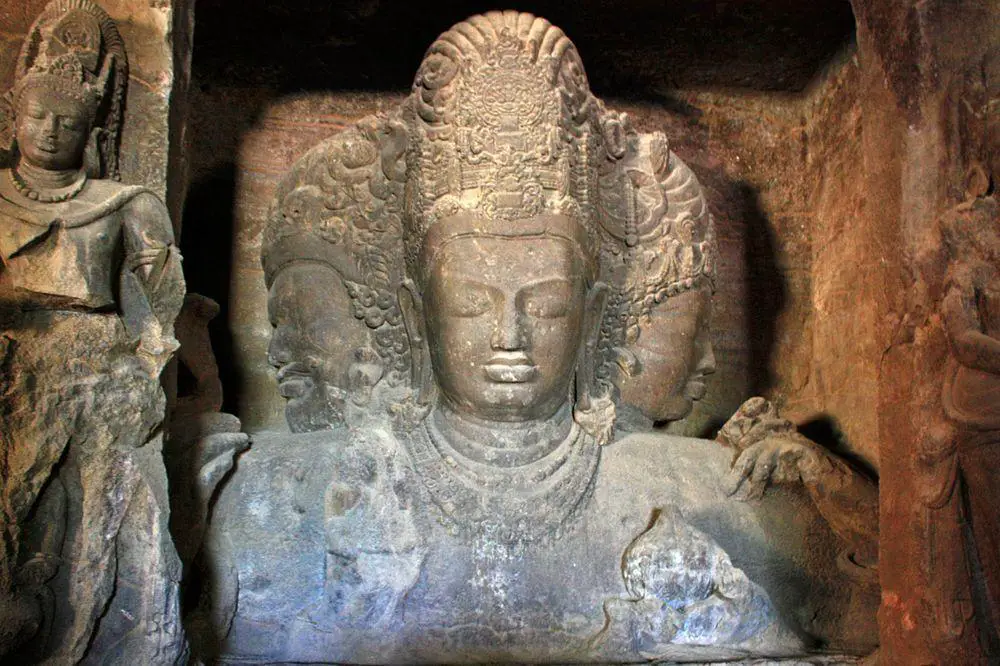
04
Pancha Rathas, Mahabalipuram
 52.0%
52.0%
Tamil Nadu
Some of the most amazing structures in Southern India are Pancha Rathas – a group of five shrines and three large sculptures of animals, all cut from a single stone in the late 7th century AD. This unique group of monuments is located in Mahabalipuram – ancient temple city of Pallavas.
Pancha Rathas ("five chariots" in Hindi) belong to the very rare examples of rock-cut architecture where whole buildings with ornate exteriors and interiors are cut from a live cliff. The purpose of their creation is not fully understood, but they resemble a procession of temple carts, frozen in stone. These ornate, complex structures differ among themselves and might represent models of diverse typical South Indian temples.
The three animal sculptures – lion, elephant, and Nandi bull – most likely are symbolically linked to a certain rathas.
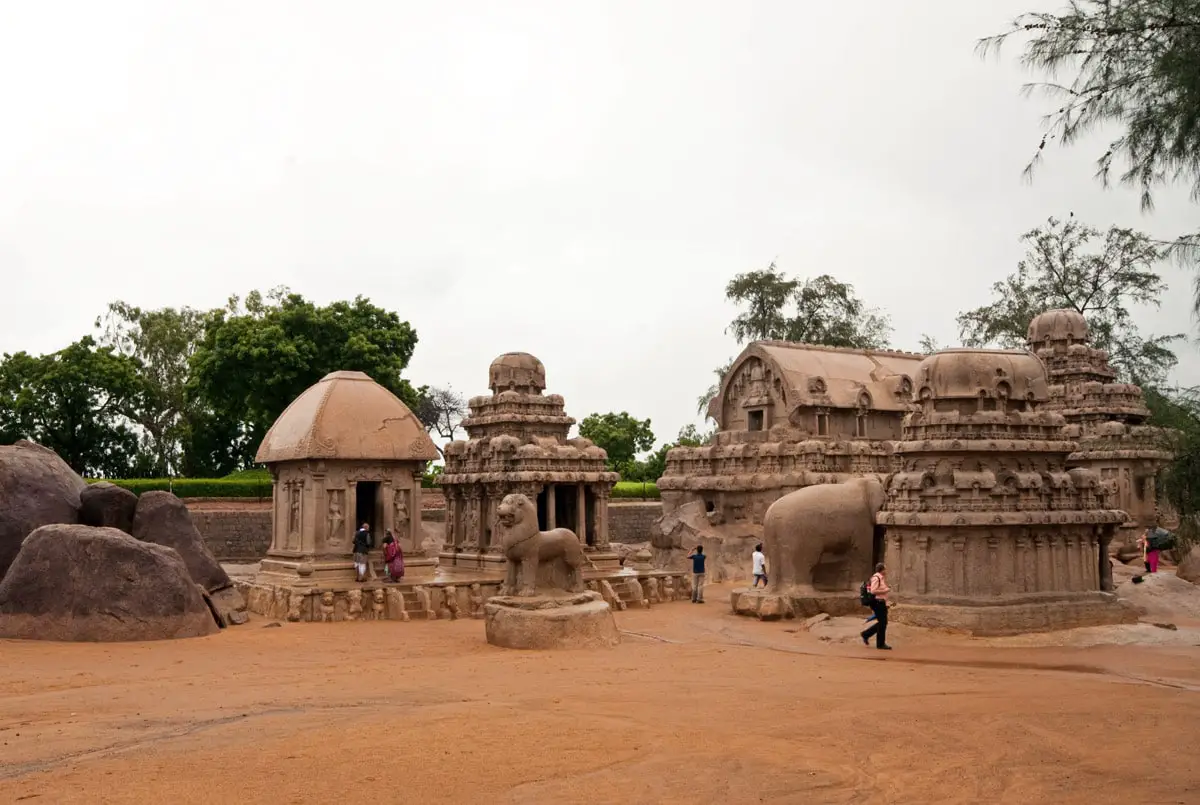
05
Karla Caves
 50.1%
50.1%
Maharashtra
Karla Caves belong to the oldest rock-cut temples in India. Construction of these Buddhist temples started in 120 BC and continued until the middle of the 2nd century AD. Some more works were done in the 5th – 10th century AD.
Karla Caves might be some of the earliest rock-cut caves, but the quality of their rich ornamentation and sculptures is far from primitive and belong to the best examples in ancient art.
Here is located the largest rock-cut sanctuary in India. This magnificent hall was made in the 1st century BC and is 45 m long and 14 m high. Some have noted that this structure in many ways looks like an inspiration for Christian cathedrals which were built thousand years later.
The ceiling of this shrine has wooden ribs. This wood has been cut 2,000 years ago and has been well preserved.
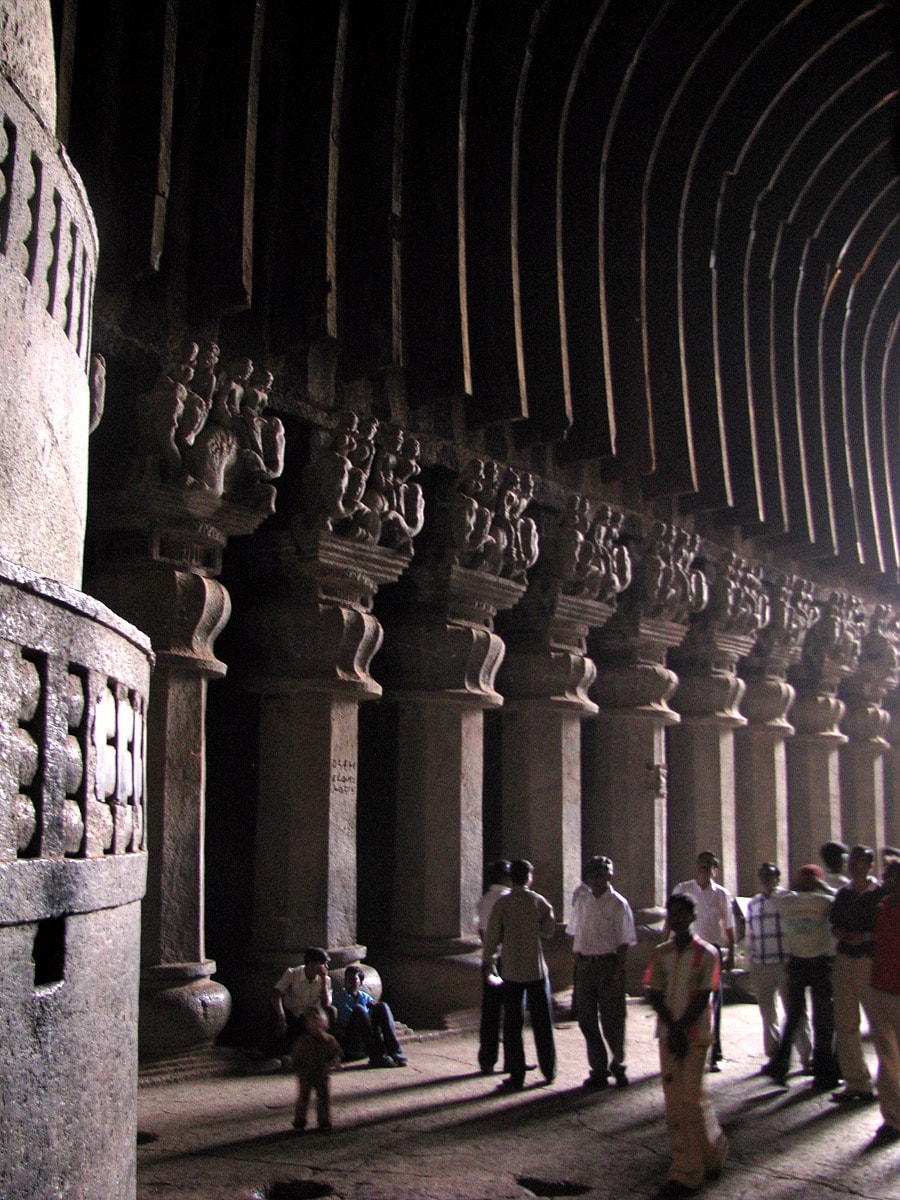
06
Bhaja Caves
 49.8%
49.8%
Maharashtra
Some 2,200 years ago (200 BC) there was created a group of 22 cave temples – Bhaja Caves. These Buddhist cave temples are well-known thanks to their amazing, ornate facades. Caves are adorned with exquisite basreliefs.
Most impressive is Cave No 12 with its imposing portal – an enormous horseshoe arch. In ancient times this facade was hidden behind a wooden structure in the front of cave. Hall behind this facade (now – open to the outside world) is the first large rock-cut shrine in India. It contains 2,200 years old wooden details.
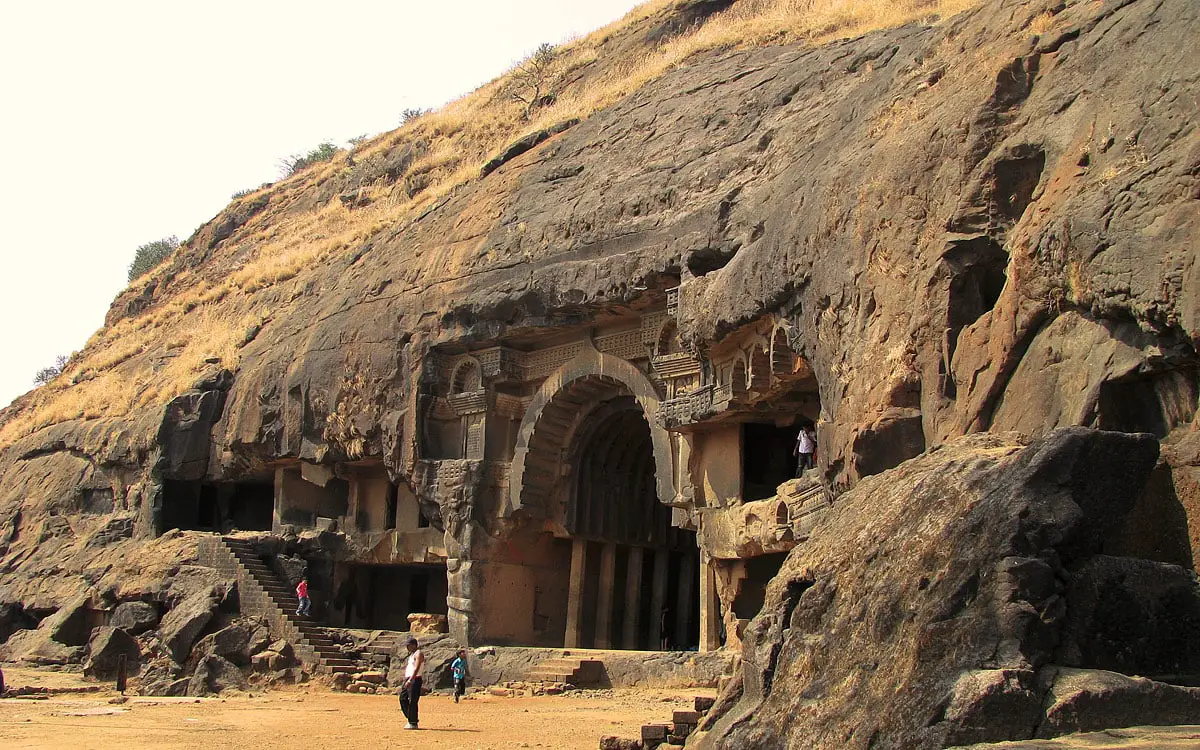
07
Masroor Rock Cut Temples (Masrur Temples)
 47.8%
47.8%
Himachal Pradesh
Undeservedly little-known wonder of Himalayas is an amazing Hinduist temple complex – Masroor Temples.
Sometimes in the 8th or 9th century (no written sources about these ancient temples have been found) one of the characteristic sandstone ridges in Kangri valley was reshaped in a miraculous way – unknown sculptors cleaved away the cliff revealing 15 (earlier sources mention 19) steep-sided pyramids – sikharas, covered with intricate stone carvings.
In the front of this group of pyramids was hewn an almost 50 m long, rectangular water tank – gan. It is almost always filled with water and mirroring the amazing temple complex.
It is possible that this is the earliest example of very important style in Hindu architecture – Nagara style.
Unfortunately much of the value of these temples have been swept away by forces of nature. Especially catastrophic was the earthquake in 1905, which turned some of the temples into ruins.
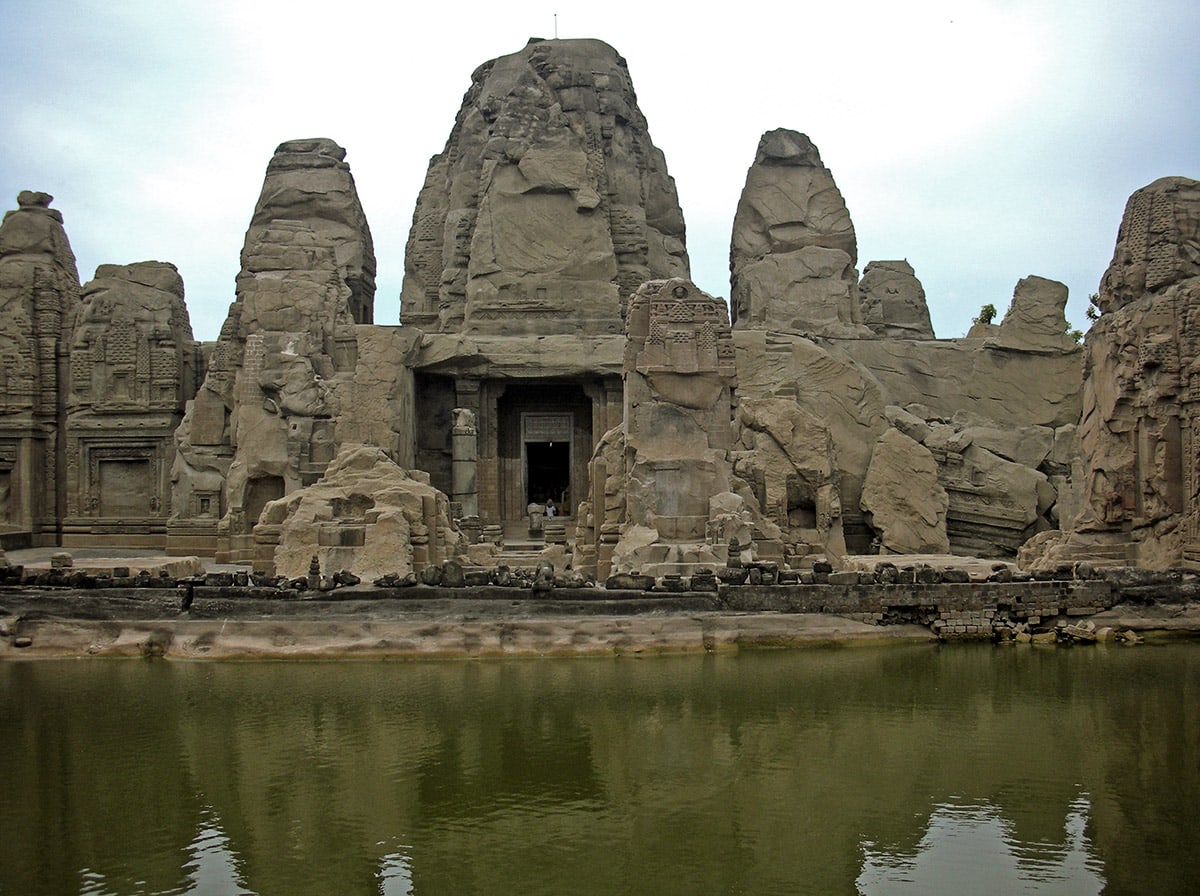
08
Udayagiri Caves, Khandagiri Caves, Odisha
 47.8%
47.8%
Odisha
In two nearby hills – Udayagiri and Khandagiri – next to some natural caves in the 1st century BC were hewn some 27 – 35 rock-cut Jain temples. Some of the temples currently are turned into Hinduist shrines.
These caves contain several important monuments of art and history.
Most impressive is Rani Gumpha (Cave 1) – a structure with two floors, adorned with exquisite stone carvings and Ganesa Gumpha (Cave 10) with its beautiful stone carvings. But also many other caves here contain beautiful ornamentation and sculptures. Thus Vyaghra Gumpha (Cave 12) has an amazing entrance part, formed like a giant head of fantastic monster. Hathi Gumpha (Cave 14) contains a very important monument of history – inscribed chronicles of King Kharavela’s reign.
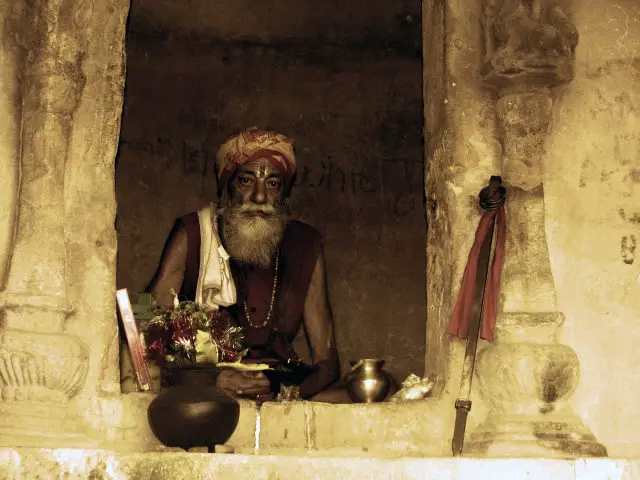
09
Badami Cave Temples
 45.3%
45.3%
Karnataka
Badami Temples were created as the symbol of the power of the Early Chalukya dynasty in the late 6th – 7th century AD. They were built in Badami – the newly built capital city of these powerful rulers.
In total here were built four cave temples – three Hindu shrines and one Jain temple.
Interiors of these temples are very ornate and represent a new style in Indian art and architecture – Chalukyan style.
Temples contain well-preserved murals and very elaborate sculptures with rich symbolism. These detailed sculptures give rich insight into the culture and even fashion in this part of India in the 6th century AD.
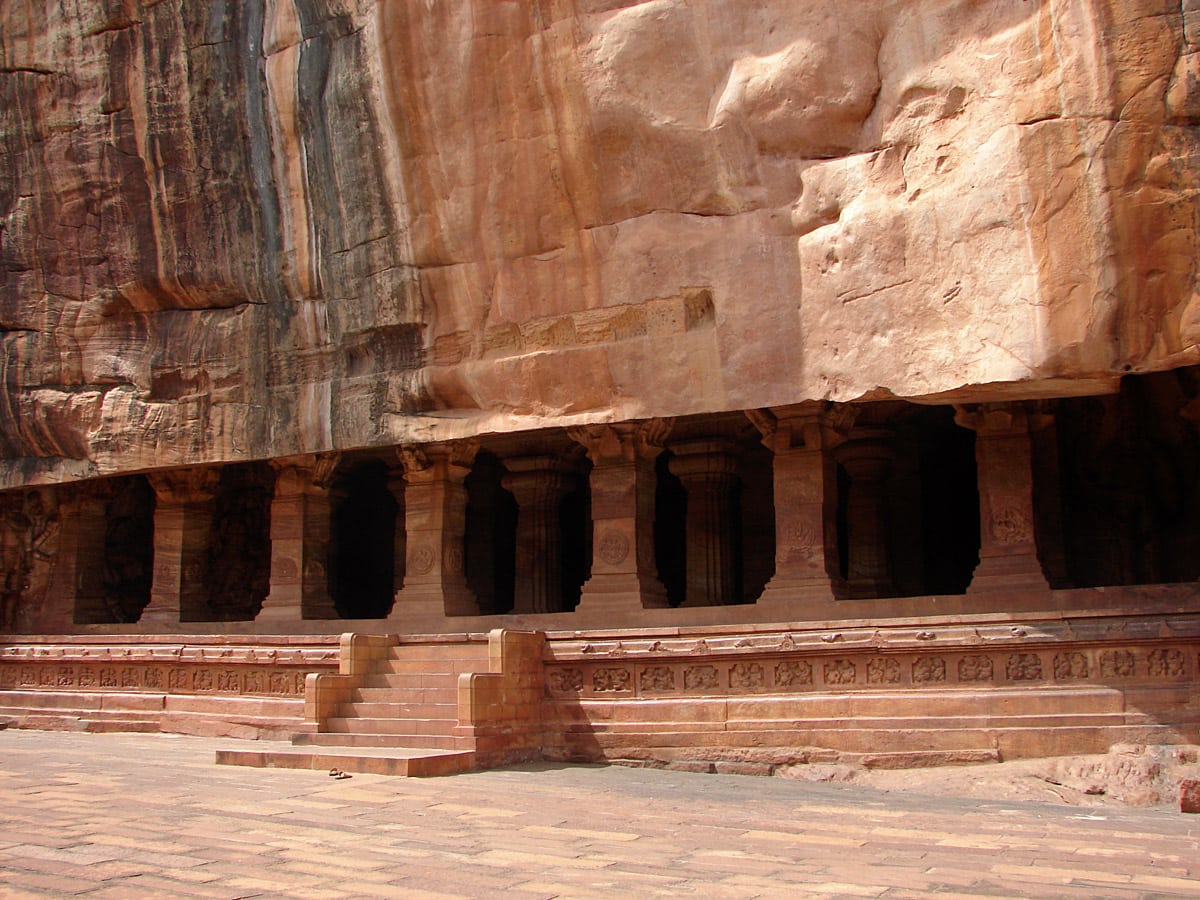
10
Kanheri Caves
 45.3%
45.3%
Maharashtra
In the basalt massif in Sanjay Gandhi National Park are located 109 (!) rock cut shrines and cells – Kanheri Caves. These Buddhist temples and cells were hewn in stone in the 1st century BC – 9th century AD.
Now these caves are located close to the suburbs of Mumbai – but 2000 years ago this was a dangerous site on an ancient trade route. Traders (often – Buddhists) took it as a relief when Buddhist monks started to live in this wild forest and made fine rooms in the basalt cliffs.
Most impressive artwork was created here in the late 5th – early 6th century AD when Kanheri Caves were the main educational center of the Mauryan and Kushan empires.
Famous are the giant – 7 m tall – Buddhas at the entrance of Cave 3. Most likely these sculptures started the amazing race for the construction of giant Buddha statues, which has spread over Asia and continues up to this day. Besides this here are found many more sculptures and murals, which have left much influence on Indian art.
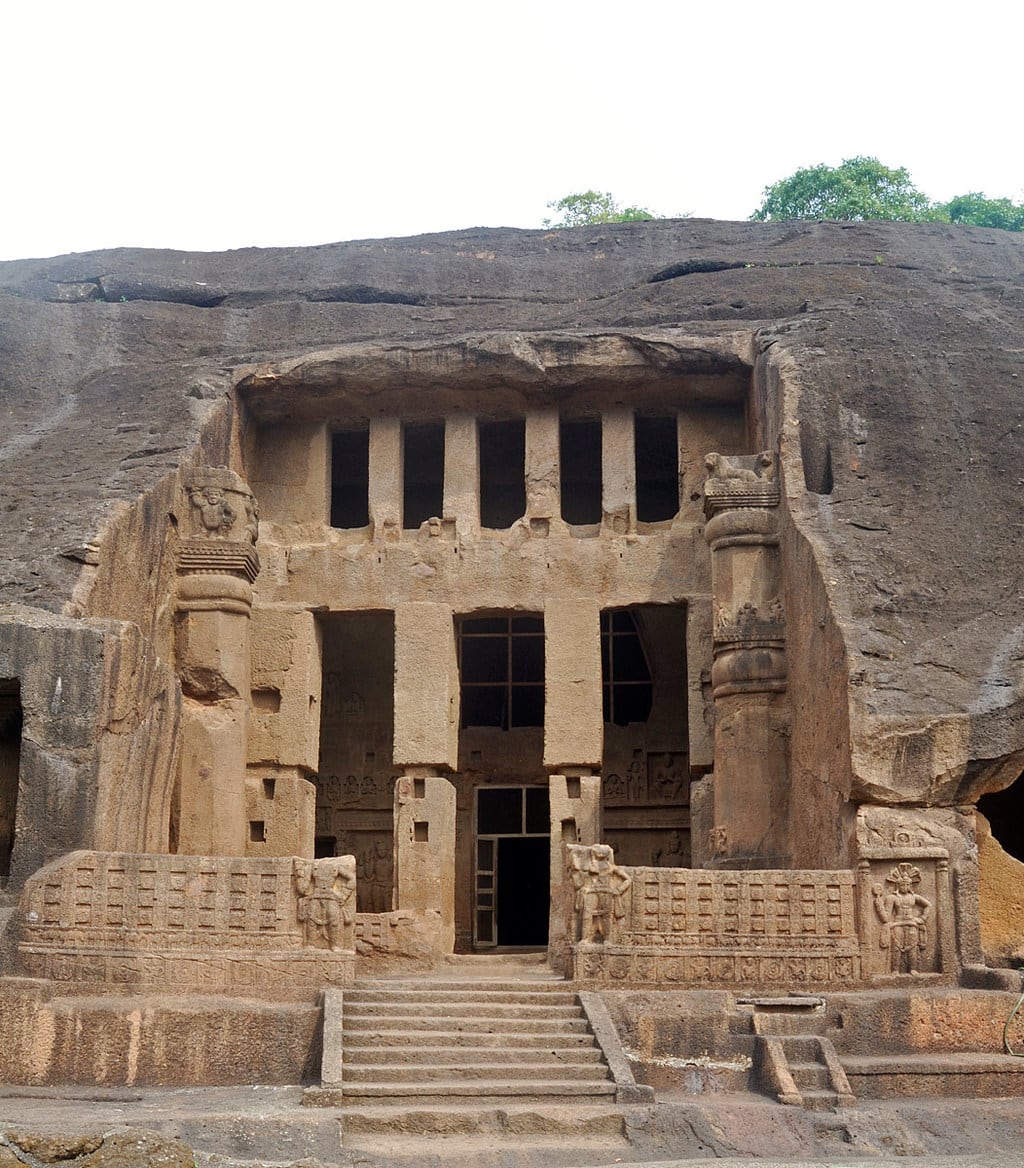
 Recommended books
Recommended books
Artefacts of History: Archaeology, Historiography and Indian Pasts
Through little-known histories of the practices, governance, and scholarship of the archaeology of India, this book re-examines the manner in which the past is recalled and historicized. It guides us to think afresh of the histories of antiquarianism in South Asia, explore the impetus of collecting and curatorial practices within the scholarship of pre-colonial India, and investigate the diverse linkages within the histories of Indian archaeology.
Lost Cities of China, Central Asia and India
Real-life “Indiana Jones,” maverick archaeologist David Childress takes the reader on an incredible adventure across some of the world’s oldest and most remote countries in search of lost cities and ancient mysteries. Discover ancient cities in the Gobi Desert; hear fantastic tales of lost continents, vanished civilizations, and secret societies bent on ruling the world; visit forgotten monasteries in forbidding snow-capped mountains with strange tunnels to mysterious subterranean cities!

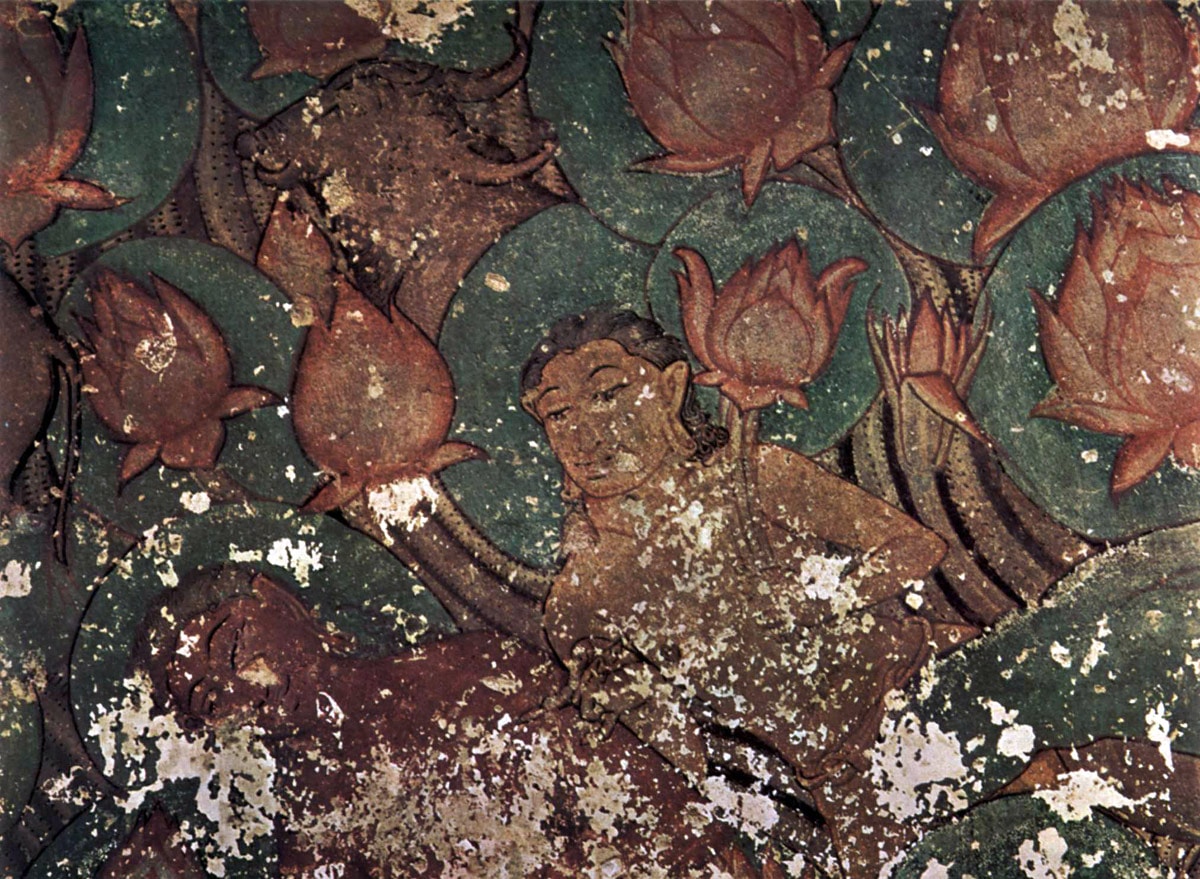


Ancient and medieval Indian cave <a href=”https://www.astaguru.com/”>paintings</a> offer a captivating glimpse into the artistic and cultural heritage of India. From the stunning rock art of Bhimbetka to the exquisite murals of Ajanta and Ellora, these paintings showcase the artistic prowess and creativity of ancient Indian artists. What makes these cave paintings truly remarkable is their ability to transcend time, allowing us to connect with the lives, beliefs and stories of our ancestors. This blog post is a wonderful tribute to these ancient artworks, highlighting their importance in preserving India’s rich artistic legacy.